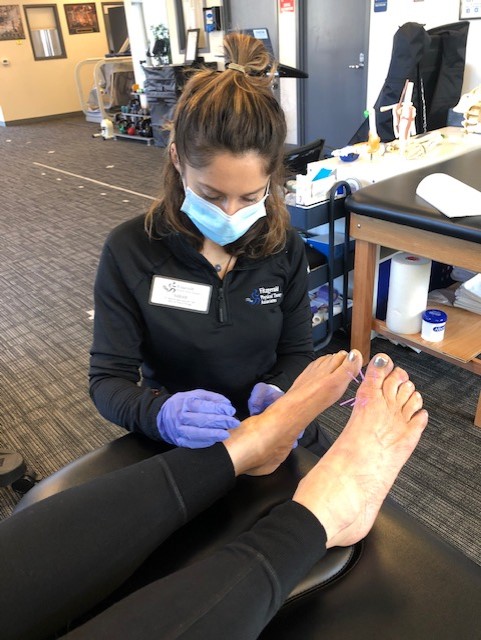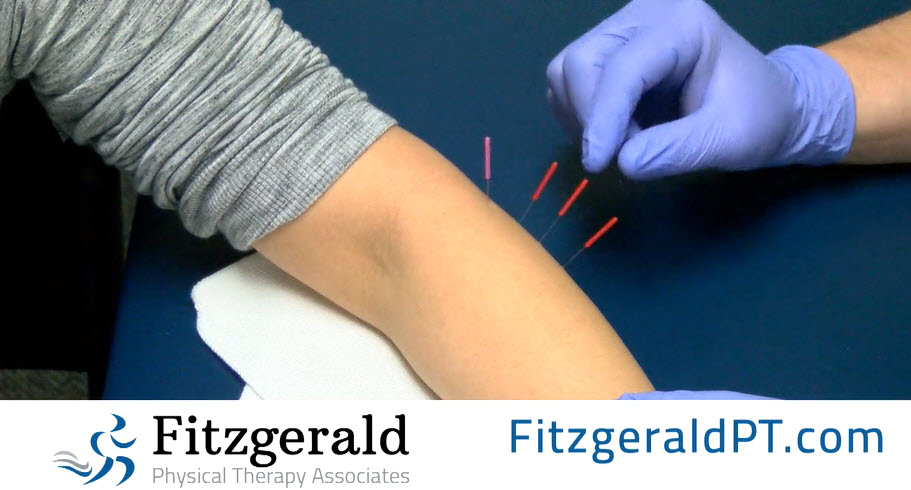
Do you suffer from pain that makes you dread stairs, walks, or simply getting out of a chair? You are not alone! Most of the time we hope that we’ll wake up and it will magically go away. Then when we finally see somebody, it is usually our family doctor who will tell us to rest and take pain medicine. Unfortunately, both of these don’t get at the causes of pain and often delay the recovery back to the active life we want and deserve.
For patients suffering from sore joints, dry needling may be able to break you out of the cycle of pain occurring at the joint and improve your mobility. This is because joint problems due to arthritis, herniated discs, muscle or ligament strains, and more are often accompanied by muscle tension and muscle spasms.
What is it?
Dry needling is a treatment used to relieve muscle pain due to trigger points (painful knots of contracted muscles) or chronic referred pain due to trigger points. Trigger points commonly develop due to overuse, lack of use, or trauma to the muscles in question. Dry needling can also help improve range of movement.
Dry needling causes knotted muscles to contract then relax – loosens tight muscles, eases joint pain, and improves blood flow to the affected area. Orthopedic patients suffering from knee pain, shoulder pain, hip pain, and/or back pain have been successfully treated with dry needling.
How does it work?
Dry needling involves inserting extremely thin needles into the muscle membrane (fascia) at the affected area to stimulate a healing response. The needles are gently manipulated and removed after a short period of time. The therapy creates a twitch response that depolarizes the tissue, causing the contracted muscle to relax. The micro tears caused by the needle prompts the body’s natural defenses to get to work, which can improve circulation and bring nutrient-rich blood to the site to boost tissue repair. Dry needling also helps to dissipate the substances that gather in an area of inflammation.
About Dry Needling
It is called “dry” needling because no medication or solution is injected with the needle; it simply pierces the skin, targeting specific tissue beneath the skin.
The treatment may seem similar to acupuncture, but the two are very different therapeutic approaches:
- Acupuncture involves the insertion of hair-thin needles at designated areas, but aims to address pain by balancing a patient’s life energy (chi or Qi), which is believed to flow in distinct pathways throughout the body.
- Dry needling, is primarily used to treat musculoskeletal disorders and follows scientifically based guidelines to alleviate pain by targeting and unknotting muscles at specific trigger points.
Is it Safe?
Yes, dry needling is used every day! It does not have the side effects of opioids, doesn’t weaken the knee joint like steroid shots, and often doesn’t need to be done for years on end like injections.
Dry needling may cause some minor discomfort with the initial muscle contraction or twitch, but it quickly subsides. Treatments may need to be repeated to achieve the desired goals.
Dry needling may be accompanied by other forms of pain management therapies, including exercise, massage, hands-on manual therapy, and heat therapy.
How do I know if it is right for me?
Find out if this is the right treatment option for you for by scheduling a dry needling consultation with one of our dry needling certified Physical Therapists.
Do I need a prescription?
No, in Massachusetts you do not need a prescription to start.
What if I have more questions?
Our PTs at Fitzgerald are specially trained in Dry Needling Treatment. Visit our website here to learn more or easily book your appointment online now!

*Due to additional skills and training needed by our PT’s to complete this service, Dry Needling is a cash-based service.
